Register an OAuth App¶
Setting up a new Microsoft365 / Outlook account? Because of Microsoft’s strict security policies, it’s not as simple as entering your username and password.
First, you’ll have to connect Zammad to your Microsoft account as an OAuth app via the Microsoft Azure Portal. Once that’s done, you’ll be able to connect as many Microsoft 365 accounts to Zammad as you want, using only active Microsoft 365 browser sessions (no usernames or passwords required).
Note
🤔 What the heck is OAuth?
If you’ve ever used a website that lets you “Sign in with Google/Facebook/Twitter”, you’ve used OAuth. OAuth is a way for you to let a third-party website see a tiny slice of your Microsoft/Facebook/Twitter account data without giving them your password (which would let them see everything).
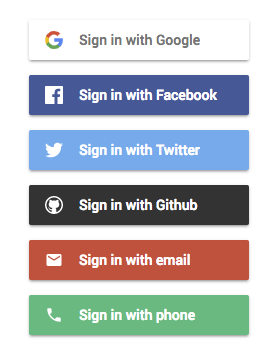
When a third-party website wants to use OAuth, it has to register with the provider first (i.e., Microsoft). This way, the provider knows who’s receiving its users’ data, and can give users a way to revoke access if they change their minds.
In this case, Zammad is that third-party website. That’s why adding a Microsoft account is a two-stage process: first, you have to register Zammad as a website that wishes to access Microsoft user data; then, you have to add yourself as a Microsoft user who agrees to let Zammad fetch your email.
Step-by-Step¶
To get started, head over to Microsoft’s Azure Portal. Make sure to use an admin account for your organization. Otherwise, an admin will have to approve your changes before they can take effect.
Add an App Registration
Under App Registrations > ➕ New Registration, use the following:
- Supported account types
Choose the option that’s right for your organization (or click Help me choose… if you’re not sure).
Accounts in this organizational directory only (Default Directory only - Single tenant)
Accounts in any organizational directory (Any Azure AD directory - Multitenant)
Accounts in any organizational directory (Any Azure AD directory - Multitenant) and personal Microsoft accounts (e.g. Skype, Xbox)
Note
🙅 The “Personal Microsoft accounts only” option is not supported.
- Redirect URI
Web > E.g.,
https://your-domain.com/api/v1/external_credentials/microsoft365/callbackFind it in the Zammad admin panel under Channels > Microsoft 365 > Connect Microsoft 365 App > Your callback URL.
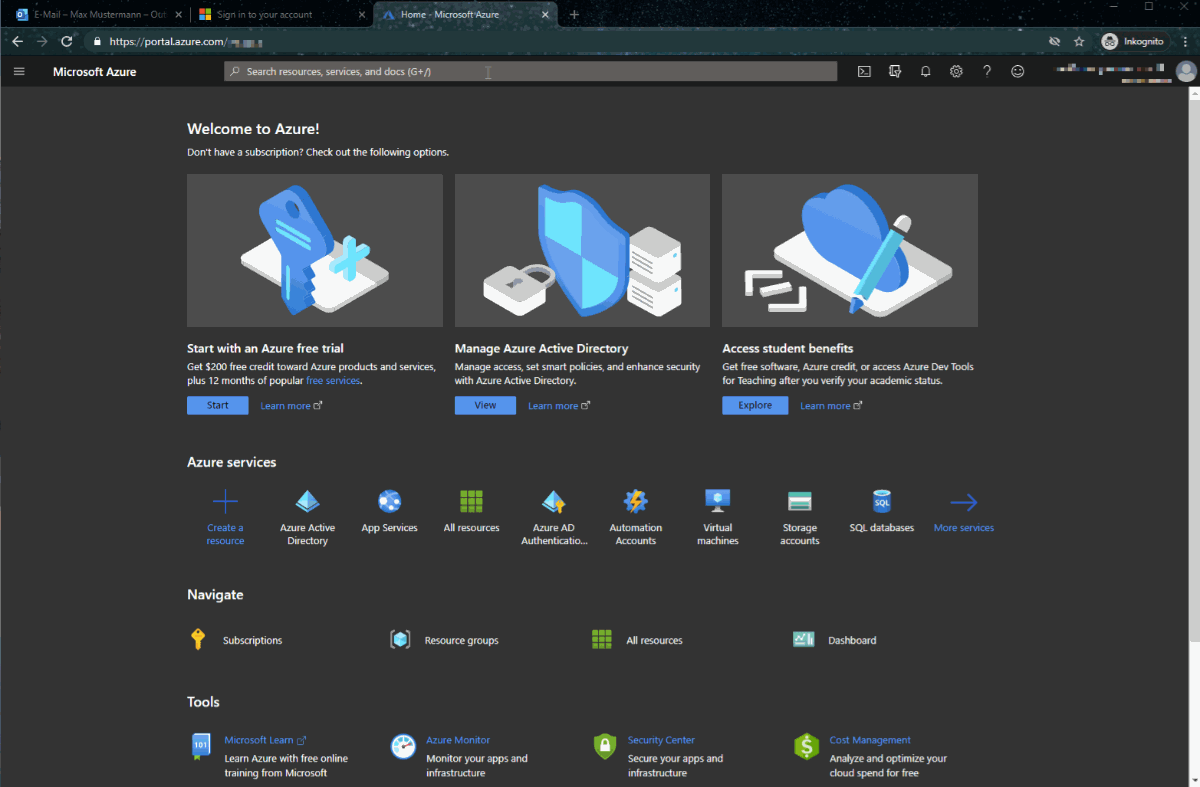
Add API permissions
Under API Permissions > ➕ Add a permission > Microsoft Graph > Delegated permissions, add the following:
- OpenId permissions
emailoffline_accessopenidprofile
- IMAP
IMAP.AccessAsUser.all
- SMTP
SMTP.Send
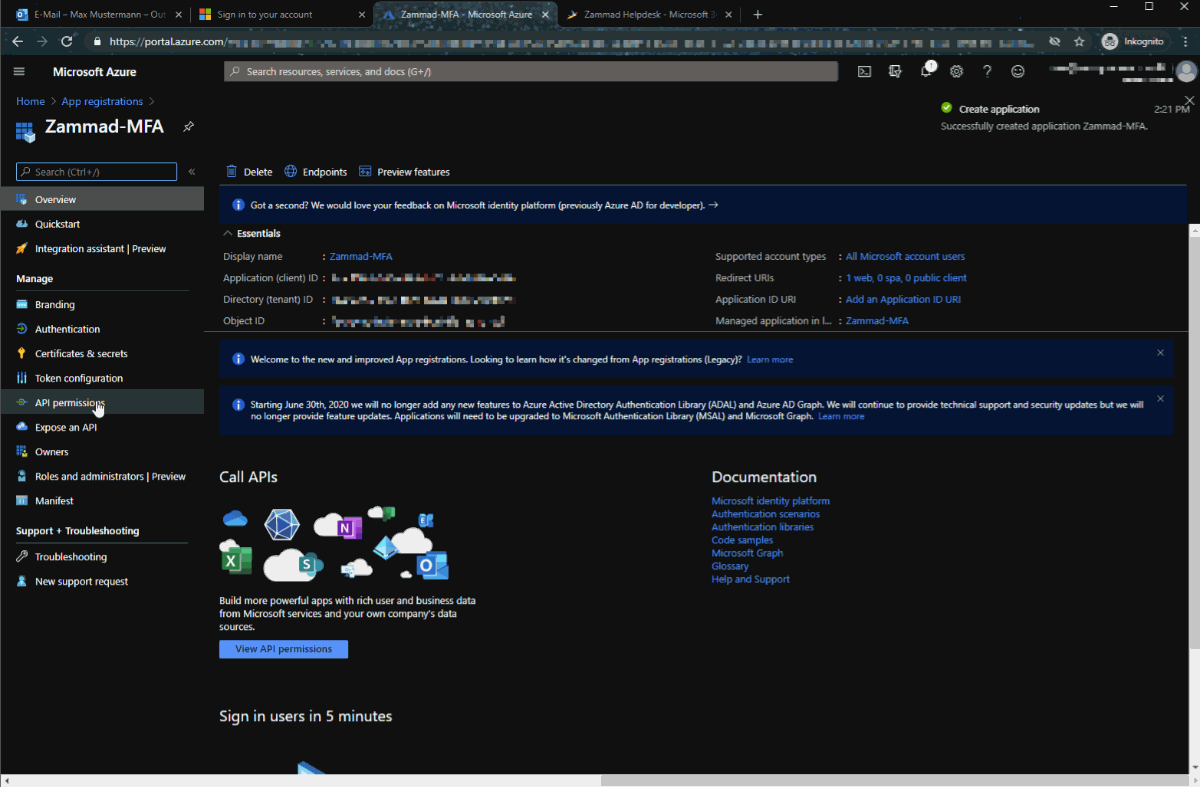
Admin Consent related information (optional)
Hint
This step is only required for tenants that require admin consent. Admin consent adds another layer of security for your tenants users and allows administrators to define who may share user information.
Within Enterprise applications select your app. When creating an app within App registrations, Microsoft will automatically also create an enterprise application for you.
Set Assignment required to
Yeswithin the apps properties and hit Save. This generally activates your app requesting admin consent already.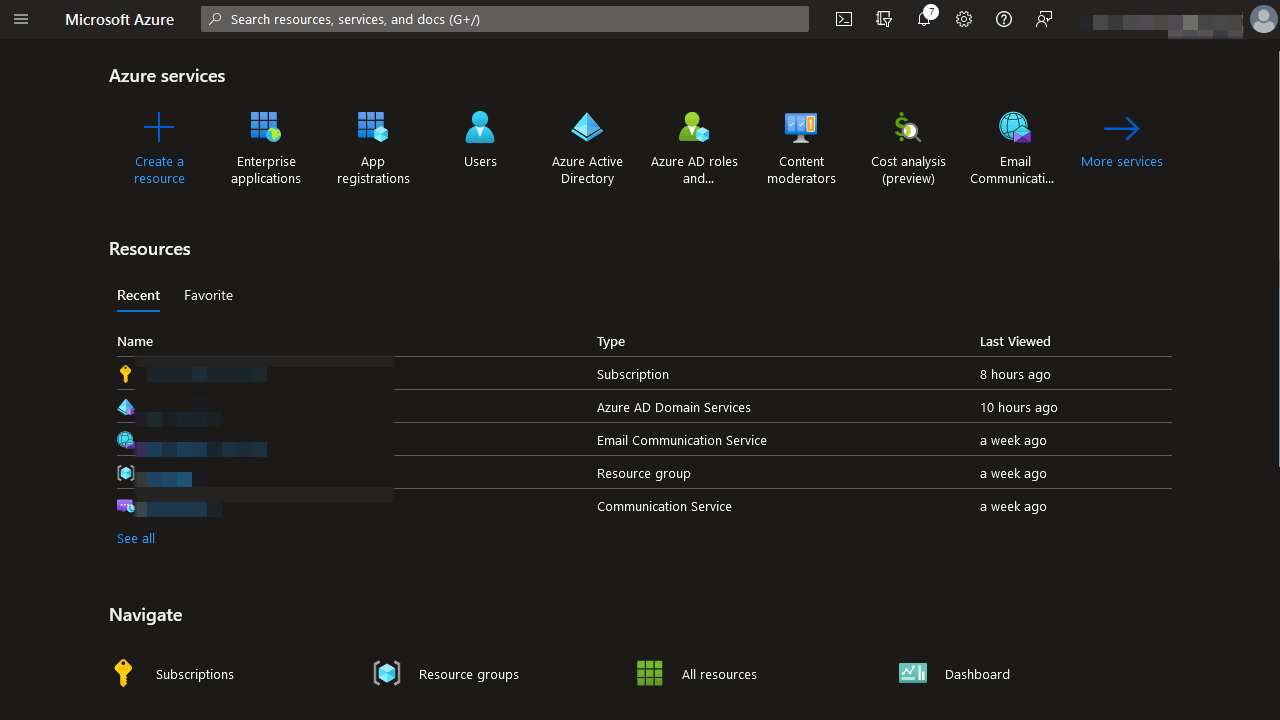
3.1 Tightening your app even further (Recommended, optional)
This step will protect your tenant users from -to admins- unwanted permission changes (e.g. requesting more permissions than originally noted).
It also has another benefit: You can add the email account in question immediately without any administrator being forced to step in manually.
Still within Enterprise applications select Users and groups. In this section you can select specific users and / or groups (users must be direct members!) that are allowed to use your app for adding mailboxes to Zammad.
After adding users and groups, go back to the Azure portals home and select App registrations. Within your desired app go to API permissions and use the Grant admin consent for {company name} button to generally allow connecting users you previously consented.
Note
Not adding users / groups nor providing the granted admin consent right away will cause Microsoft to enforce at least the first user to be requested to provide a reason for the consent request. After that Microsoft will automatically grant the consent for your tenant.
Administrative accounts can also use the option Consent on behalf of your organization in above mentioned permission dialogue.
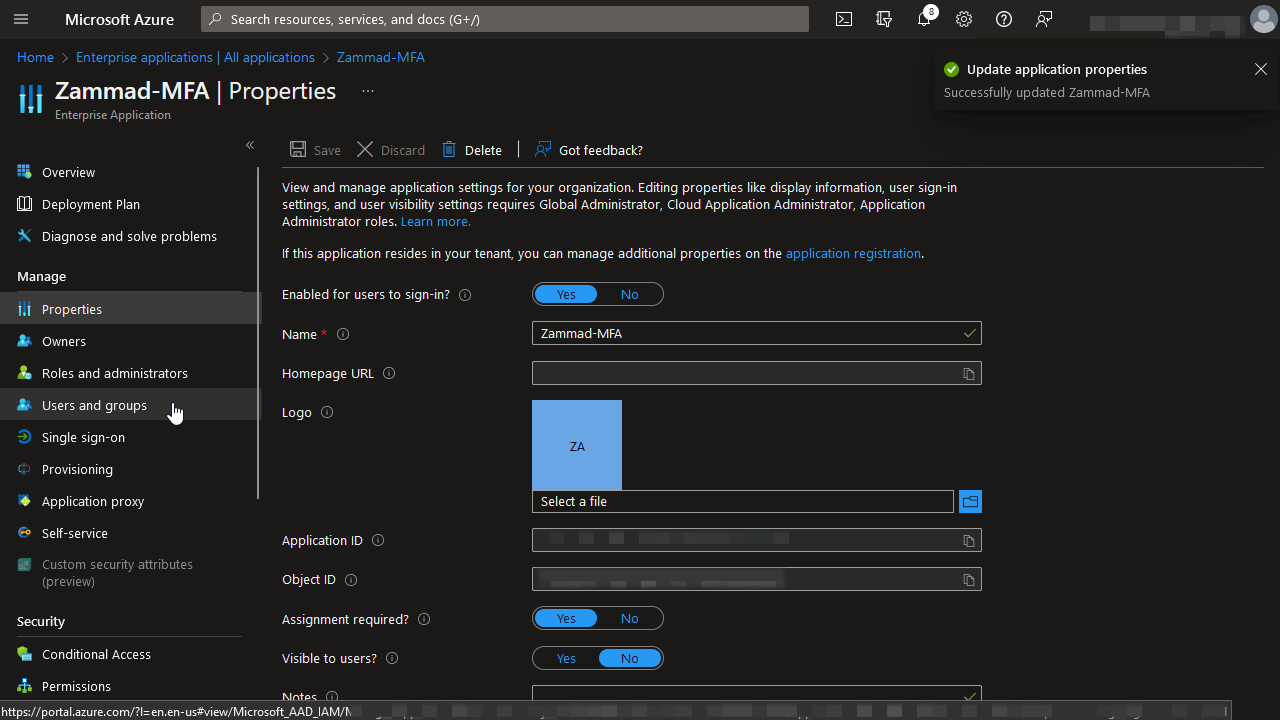
Connect your Microsoft app in Zammad
Copy your new app registration’s Application (client) ID and Directory (tenant) ID (found under Overview > Essentials) into Zammad in the admin panel, under Channels > Microsoft 365 > Connect Microsoft 365 App.
Then, create a new client secret under Certificates and Secrets > ➕ New Client Secret and copy that into the Zammad admin panel, as well.
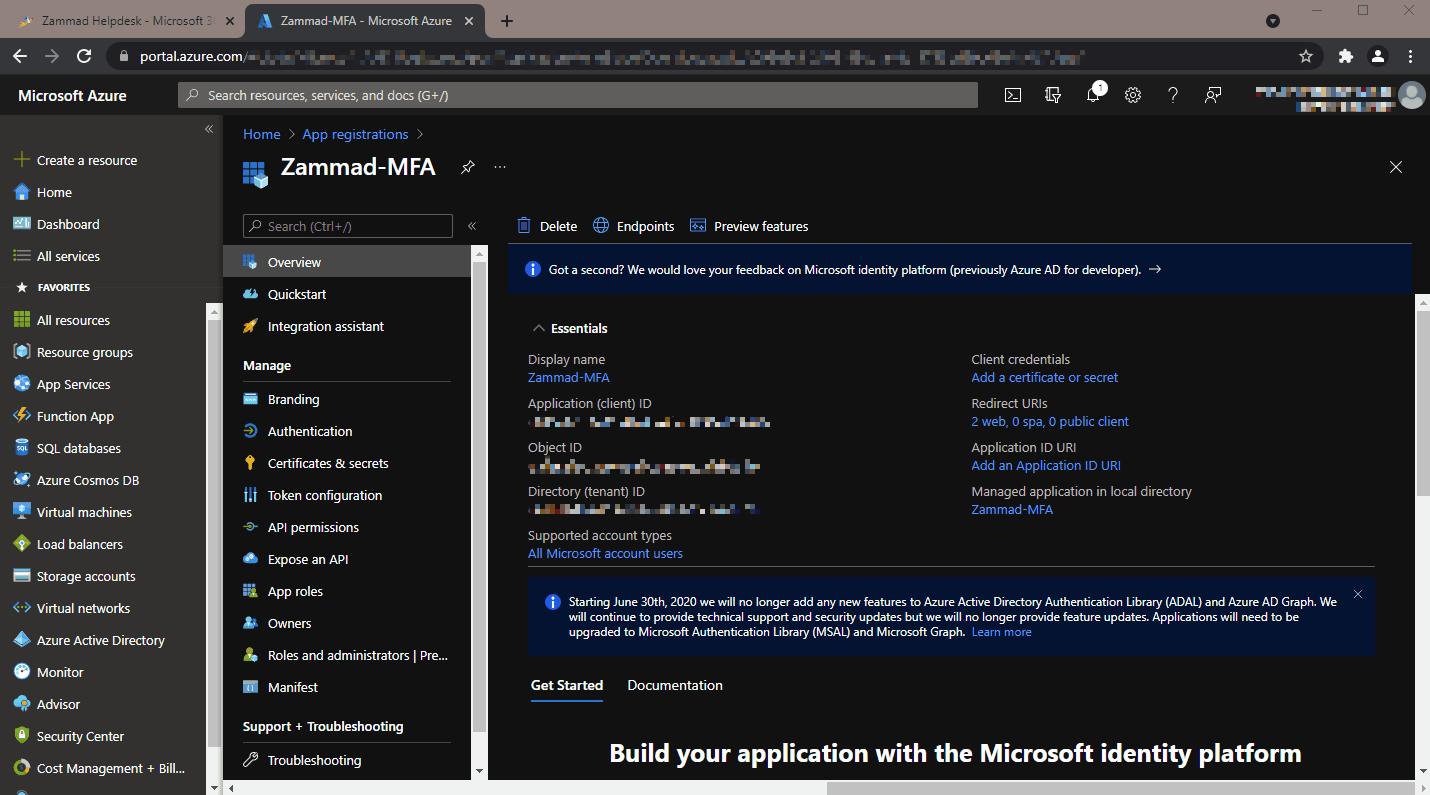
🍾 Congratulations! Now you’re ready to connect Microsoft 365 or Outlook accounts to Zammad.